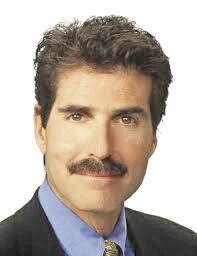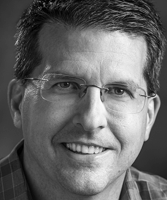Drain the swamp
Published 8:40 am Friday, May 10, 2024

- John Stossel
Presidential candidate Donald Trump promised to “drain the swamp!”
The “swamp” is the permanent Washington bureaucracy working to perpetuate itself.
In 2020, then-President Trump said he was succeeding: “We’re draining the Washington swamp!”
But it’s not true.
“He made government bigger,” Economist Ed Stringham says in my new video. ‘That’s going in the wrong direction. Looking through a list of agencies, every single one I could see, there were more employees after his presidency than before.”
Trump added almost 2 million jobs to the federal workforce.
He did make some cuts at the State Department, Labor Department, Education Department and his own office. But total spending under Trump nearly doubled. Some was in response to COVID, but billions in extra spending came before.
That spending increased the size of the swamp. New programs filled Washington with more bureaucrats.
Trump launched a $6 billion “Farmers to Families” Food Box Program to bring food from farmers to families.
“Last I checked,” jokes Stringham, “we have an industry for that. It’s called the supermarket industry. It exists for a reason. Markets are good at getting things from farmer to consumer.”
Trump pandered to women, signing a Women, Peace and Security Act, the Woman Entrepreneurship and Empowerment Act, the Women’s Global Development and Prosperity Initiative, a Women Entrepreneurs Finance Initiative …
That just made the swamp bigger.
Probably permanently.
“Once government implements a program,” Stringham points out, “it becomes very difficult to roll that back. You’ve created a whole new constituency of lobbyists who love their new income.”
Seventy years ago, Congress feared America wouldn’t have enough mohair for soldiers’ uniforms. So they subsidized mohair production.
Today, the military doesn’t use mohair. But the subsidy continues.
“We’re stuck with it,” says Stringham, “because now there’s a whole group of new people on the payroll who like what they have.”
At least Trump acknowledges his failure to drain the swamp.
“When I said it, it sounded very easy and it was going to happen real fast,” he says. “I didn’t know the swamp was this dirty and this deep.”
Elect me again, he promises, and “we will drain the swamp once and for all.”
I doubt it.
Trump doesn’t understand the source of the swamp.
When a reporter called him out, saying, “You didn’t drain the swamp like you said you would,” Trump replied, “I did. I fired Comey. I fired a lot of people.”
“He fired a couple people,” replies Stringham, “but hiring additional people for government jobs — that’s not draining the swamp; that’s making things worse.”
Much worse, because once you hire government employees, it’s nearly impossible to fire them.
They “can show up late, not show up at all, show up drunk,” says popular Youtuber Armand Curet, who works for the Department of Housing and Urban Development.
Instead of hiring more bureaucrats, Trump could have turned to the private sector.
“Privatize!” Exclaims Stringham. “Government doesn’t need to be doing all these things. We have markets.”
Markets work better. They even create things people assume can only be done by government.
When I ask people, “Who built NYC’s subways?” everyone answers, “Government.”
But it’s not true. Private companies built most of them.
Politicians then forbade the entrepreneurs to raise prices from a nickel to a dime, driving them out of business. The city took over the subways and, guess what … raised the price much more.
Private enterprise is simply more efficient.
America doesn’t need the Labor, Agriculture, Commerce departments. Those things just happen. They work better if government gets out of the way.
Trump didn’t privatize any department.
“He did do some deregulation,” I say to Stringham.
“Government spending increased dramatically,” Stringham replies. “I don’t see that as draining the swamp. I see that as making the swamp a lot bigger.”
There’s only one way to drain it, he adds: “Don’t have the government in control of so many things.”
Award-winning news correspondent John Stossel is the creator of Stossel TV videos. Before making the change to Stossel TV, he was the co-anchor of ABC News’ “20/20.” Eight to 10 million people watched his program weekly. Often, he ended “20/20” with a TV column called “Give Me a Break,” which challenged conventional wisdom.




